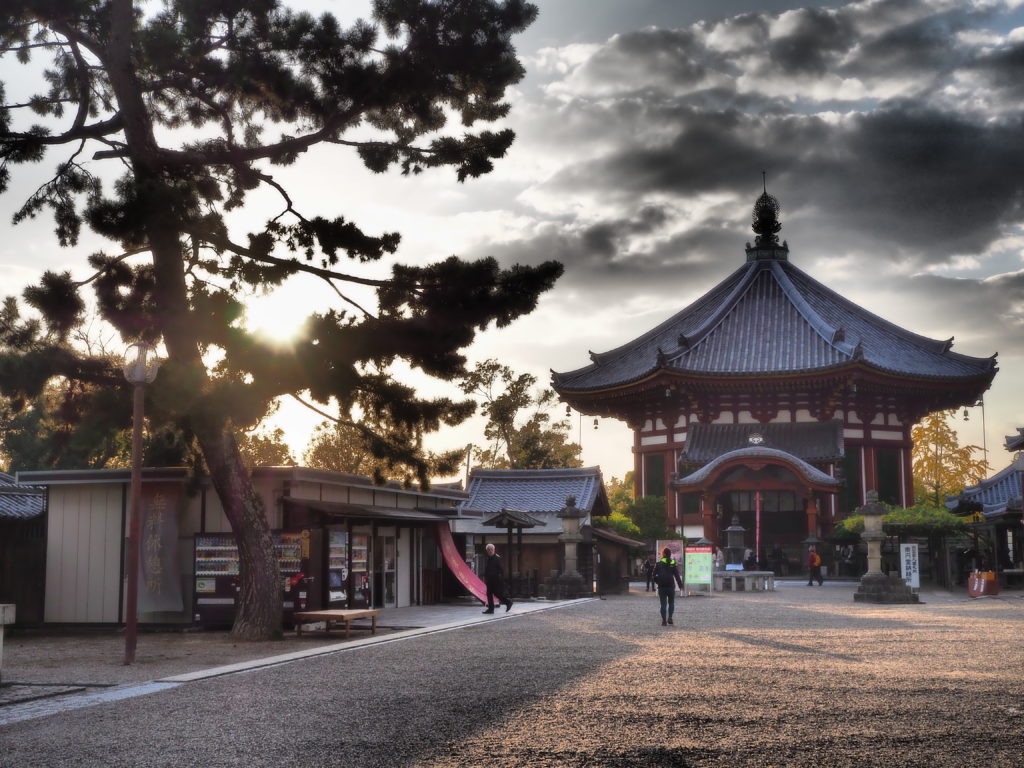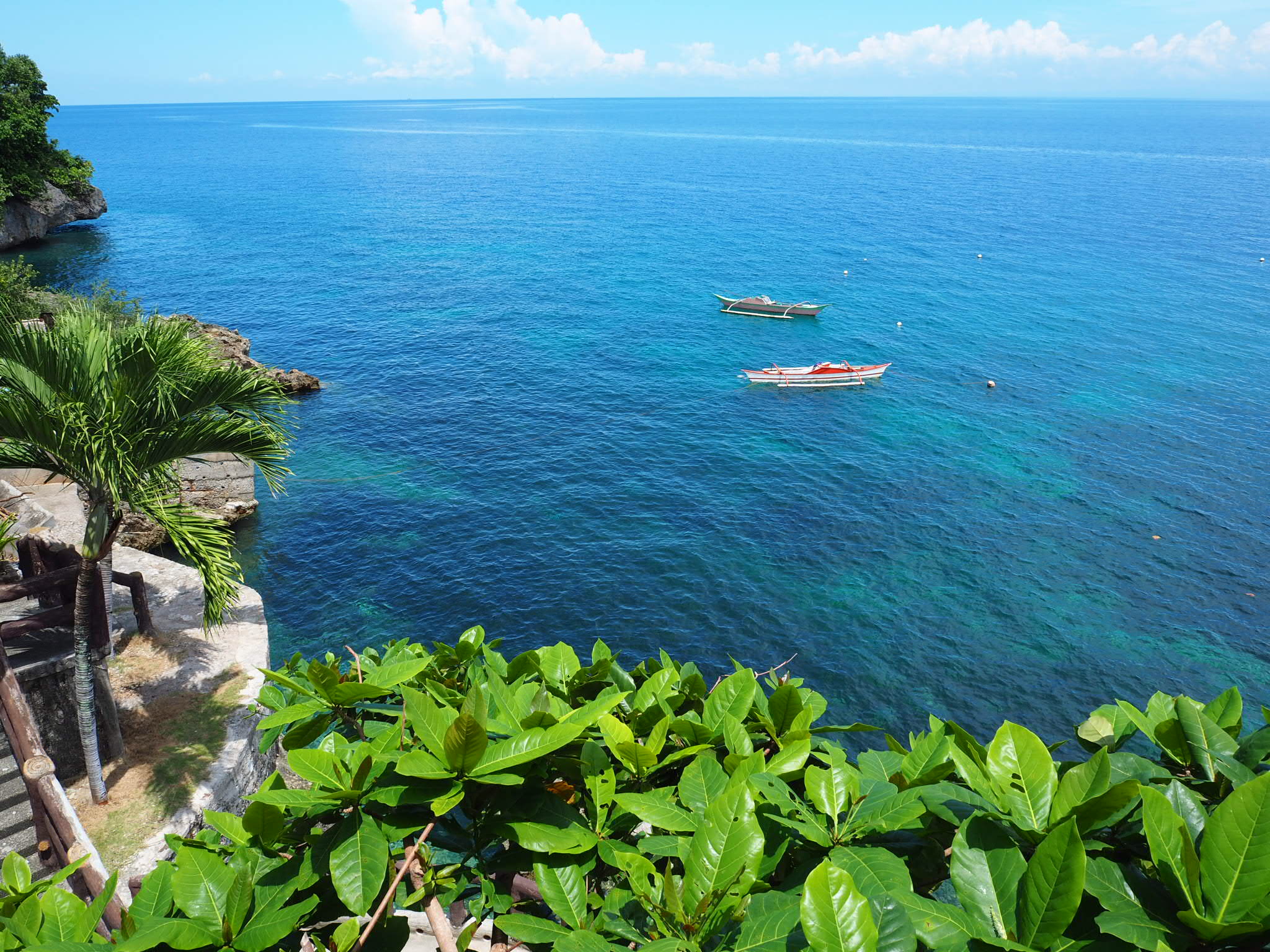Exploring Kansai
As Japan’s second largest city Osaka is an excellent place to base yourself and explore the surrounding area. Although Kansai is dominated by Kyoto there is still plenty to see and do around Osaka most notably Nara and Himeji. The big highlight being Nara. One of Japan’s ancient the city is most famous for is gorgeous temples and hordes of friendly, but very hungry deer.
Below we have guides for Osaka, Nara and Himeji, covering transport, eating and sleeping as well as few awesome things to see and do. Nara and Himeji make excellent day trips from Osaka, and in truth a day is enough for each location. You can obviously stay longer and explore some of the more hidden gems, but most people don’t have that much time. We have a detailed guide on budgeting and saving money in Japan. This includes a section on JR passes and how to pick the right JR pass for your trip.
Osaka
Osaka is low on things to see in comparison to other cities in the region, however what it lacks in sites it makes up for in food, neon craziness and people watching in the cities thriving hub of Dotonbori.
Getting Around
Be under no illusions, Osaka is huge, and like many other large Japanese cities the train network can be a little confusing. The subway network is made up of regular metro services and JR lines. Therefore your JR pass can only be used on JR lines itself. It’s times like this that Hyperdia comes in handy, helping you work out the best route from point A to point B. Confusion aside, public transport in Osaka is excellent.
Where to stay
Osaka’s public transport system makes this large city feel a quite a bit smaller. That being said it still pays to do a bit of research in order to find the best area to stay. Anywhere around Dotonbori and Namba is likely to be on the pricier side, but deals can be found on airbnb and booking.com, especially if traveling in low or shoulder season. We stayed around Osaka Uehommachi, which is 10 minutes on the subway or a 30 minute walk to the Namba/Dotonbori area. The southern side of city seems to have more going, but so long as you are close to a subway or JR station you should be ok. Staying in this area of Osaka meant that we were only a short train ride from direct trains to Himeji and Nara.
What to see and do
There are a number of information centre’s around Dotonbori that sell “Amazing Osaka Passes.” The pass covers all subway lines and entry into a huge number of attractions for one day. When we used it we headed to Osaka Castle, did the HEP5 ferris wheel, went to the top of the Umeda tower and took in an evening cruise (which was not that great to be honest). It costs 2500 and it ended up saving us 2500 yen in transport and entrance fee’s definitely worth it.
Osaka Castle: Stunning Osaka-jo is one of the cities most popular sites, sadly we caught it on a rainy day, but it gives you an excellent introduction to the cities history.
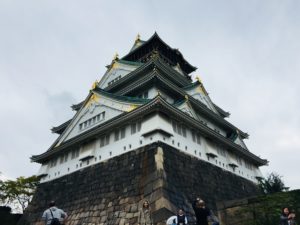
HEP5 Ferris Wheel: Only in Japan could you find a ferris wheel on top of a 13 story building. With amazing views over the city this worth a visit.
Umeda Tower: Another platform to gaze out over Osakas futuristic skyline.
Temples: There are a few small temples dotted around the city, but nothing on the scale of Kyoto and Nara.
Dotonbori: For many people this is Osaka; neon lights, j-pop coming from just about doorway, restaurants serving all manner of food and people everywhere. Exploring Dotonbori’s backstreets is one of the highlights of any trip to the region.
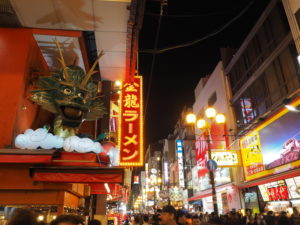
Eating: Osaka is famous among the Japanese as being the place where you can eat until you are going to explode, and they are definitely right. The food here is simply sublime; after all this was the place that invented conveyor belt sushi and takoyaki. The yakiniku (Japanese BBQ) is particularly excellent with numerous restaurants dotted all over the city, although naturally the highest concentration being in and around Dotonbori. There are also numerous all you can eat and drink deals at BBQ restaurants. There are usually a variety of different menus and the all you can eat period is done over a specific time period, usually 1.5 hours. Conveyor belt sushi restaurants are numerous, inexpensive and delicious.
Himeji
We visited Himeji as a day trip from Osaka. The train journey is around an hour, depending on the type of train you get. Trains from Osaka to Himeji and back again are very regular so you should have no issues getting there and back.
Getting Around
Outside the train station there are numerous bus stops that can get you all over the city. However the main sights are walking distance from the train station.
What to see and do
Himeji Castle: One of Japans most beautiful castles, the grounds and the surrounding area are simply sublime. The castle has some excellent exhibits in English giving you a fascinating insight into the regions history. When you enter the castle itself you will need to remove your shoes.
When we visited it was chucking it down with rain. Umbrellas and ponchos were available at the entrance. However fortunately the rain clouds disappeared when we headed into the gardens next door.
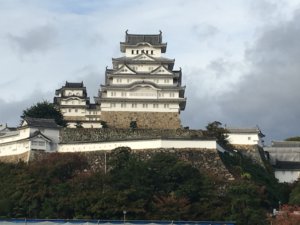
Koko-en: Next to Himeji Castle are stunning set of Japanese gardens. You can opt to have entry into the gardens included on your entry ticket to the castle.
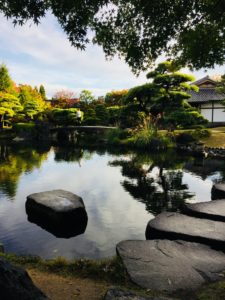
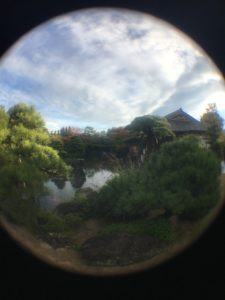
Nara
One of Japans most popular and famous towns, Nara is as famous for its deer as it is for it’s temples. We visited Nara as a day trip from Osaka, trains are both numerous and regular. Alternatively Nara can be easily visited as a day trip from Kyoto.
Getting Around
From Nara train station there are regular buses to Nara park (Nara-Koen), the main temple area of the city. From here almost everything is within walking distance.
What to see and do
Deer: For many tourists this is one of the highlights of visiting Nara. They are everywhere and unlike the deer in Miyajima they seem less focused on stealing food out of peoples bags. The reason for this is probably due to the large number of stalls selling deer biscuits. Buying these deer biscuits will lead to plenty of attention from Nara’s fury friends.
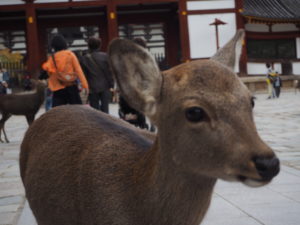
Temples: Nara is Japans most famous temple city and from 710 to 794 AD Nara it was the capital. During this time a huge number of buddhist temples were constructed and they are still in excellent condition today. In addition to the Buddhist temples, there are a large number of Shinto shrines dotted around the area as well. There are so many temples, that it’s impossible to write about all of them. From Nara park head down to Todai-ji and from here you follow the road round in a huge loop that will end close to where you started. This route takes you around the vast majority of Nara’s temples. Some of the temples are free to enter and some of the temples charge, usually the cost of entering such temples is around 400 yen per person.
Here are some of our favourite temples below.
Todai-ji and Daibetsu-den Hall: Nara’s biggest and most impressive temple. Todai-ji is the home of Daibetsu (Great Buddha).
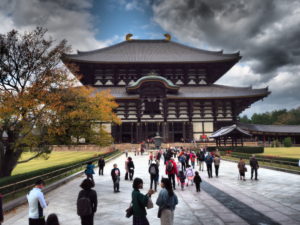
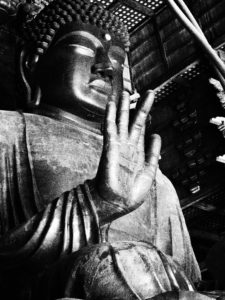
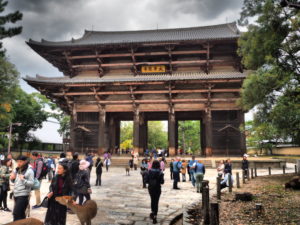
Nigatsu-do and Sangatsu-do: Following the path up the hill from Todai-ji you will find a pair of stunning temples, including possibly Nara’s most recognisable temple – Nigatsu-do. After climbing the stairs to the top of this temple you will be rewarded with sweeping views over the Nara plain.
Kasuga Taisha: Nestled in the south eastern corner of Nara park you will find this beautiful Shinto shrine.
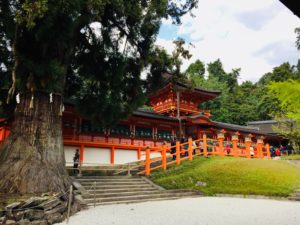
Kofuku-ji: A particularly stunning pagoda close on the edge of Nara park.
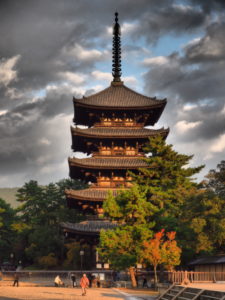
Osaka, Nara and Himeji all have a lot to offer. However of the 3, Nara was our personal favourite!
